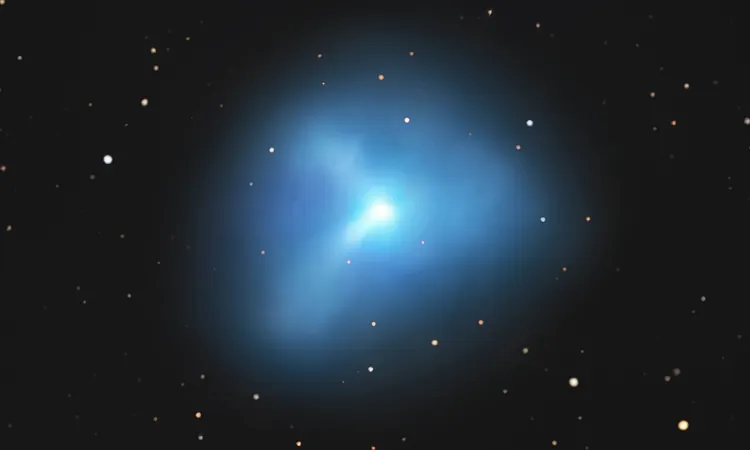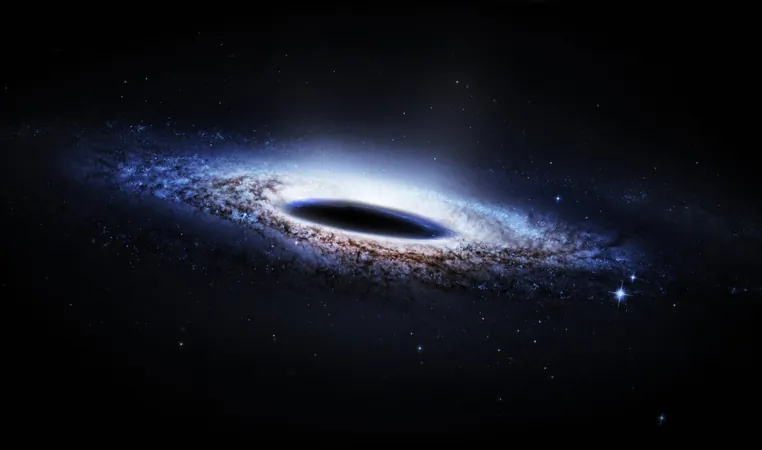
NASA's Exploration of Mysterious Centaurs: New Discoveries from Deep Space
2024-10-06
Investigating Centaur 29P/Schwassmann-Wachmann 1
Sara Faggi, a researcher at NASA’s Goddard Space Flight Center, leads a comprehensive study on Centaur 29P/Schwassmann-Wachmann 1, or simply referred to as 29P. With Webb's advanced instruments, the team is uncovering crucial insights that may reshape our understanding of these hybrid celestial bodies.
Located between Jupiter and Neptune, centaurs are thought to have originated as trans-Neptunian objects before being influenced inward by gravitational forces over millions of years. Their awe-inspiring characteristics are reminiscent of both Kuiper Belt bodies and short-period comets. This unique classification becomes particularly fascinating with 29P, which experiences dramatic outbursts every six to eight weeks. These frequent eruptions make it one of the most active objects in the outer solar system.
Faggi describes centaurs as "some of the leftovers of our planetary system’s formation," emphasizing their role in preserving vital clues about the early solar system's composition.
Groundbreaking Discoveries: New Jets of Carbon Gas
Utilizing the Near-Infrared Spectrograph (NIRSpec) on the Webb Telescope, the research team has encountered remarkable observations. They identified a new jet of carbon monoxide (CO) and previously unobserved jets of carbon dioxide (CO₂) gas emanating from 29P. These findings offer tantalizing hints about the centaur's nucleus and materials.
Faggi expressed exhilaration upon witnessing the initial data: “Webb really opened the door to a resolution and sensitivity that was impressive to us—we had never seen anything like this.” The presence of distinct CO and CO₂ jets coming from the centaur suggests a complex and possibly varied surface structure. Contrarily, no water vapor was detected, indicating that the frigid temperatures of 29P may inhibit any water ice from sublimating into gas.
Unveiling the Mystery of Jet Behavior
The team's exploration led to the creation of a 3D model to analyze the jets' orientation and origins. The results indicated that the jets emit from various regions on the centaur's nucleus, despite Webb's inability to resolve the nucleus itself. Co-author Geronimo Villanueva noted the dramatic variation in CO and CO₂ abundance could imply that 29P is a conglomerate of distinct pieces, merging to form a celestial body from drastically different formation paths.
This revelation challenges established theories regarding the production and distribution of primordial objects within the Kuiper Belt and sparks new questions regarding the development and storage processes of these fascinating bodies.
The Impact of Outbursts and Beyond
Understanding the mechanics behind 29P's bursts of brightness and outgassing is central to this research. Unlike comets, where jets are typically triggered by water ice sublimation, the cold environment of centaurs complicates the understanding of their behavior. Adam McKay, another research co-author, emphasized the need for extended observations: “I’d like to go back and look at Centaur 29P over a much longer period of time to see if the jets maintain their orientation or if additional jets appear.”
Studying centaurs like 29P transcends mere scientific curiosity. These icy bodies serve as time capsules, preserving ancient conditions and materials from the nascent solar system. Insights gleaned from 29P could illuminate how planets—including Earth—were formed and evolved.
As research continues, scientists remain hopeful that findings from 29P and other centaurs will deepen our understanding of solar system formation. Each discovery propels the astronomical community closer to deciphering the complex history that shapes our cosmic neighborhood.
For those captivated by these celestial investigations, the complete study is available in the journal *Nature*, revealing the mysteries of deep space and extending an inviting hand to the wonders that lie beyond our home planet.





 Brasil (PT)
Brasil (PT)
 Canada (EN)
Canada (EN)
 Chile (ES)
Chile (ES)
 España (ES)
España (ES)
 France (FR)
France (FR)
 Hong Kong (EN)
Hong Kong (EN)
 Italia (IT)
Italia (IT)
 日本 (JA)
日本 (JA)
 Magyarország (HU)
Magyarország (HU)
 Norge (NO)
Norge (NO)
 Polska (PL)
Polska (PL)
 Schweiz (DE)
Schweiz (DE)
 Singapore (EN)
Singapore (EN)
 Sverige (SV)
Sverige (SV)
 Suomi (FI)
Suomi (FI)
 Türkiye (TR)
Türkiye (TR)